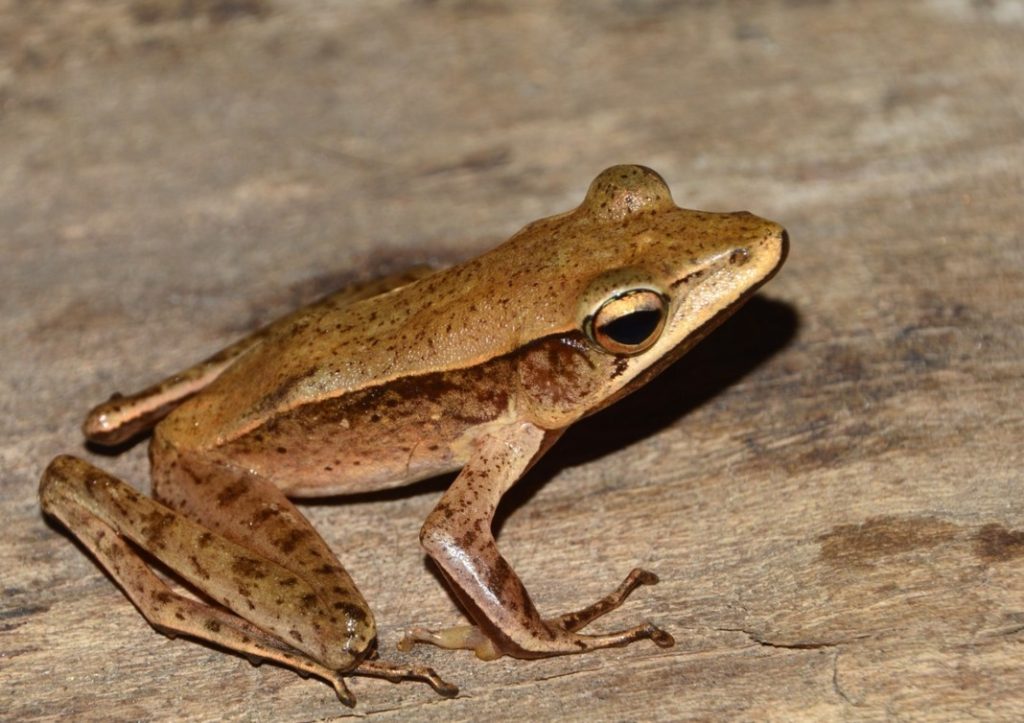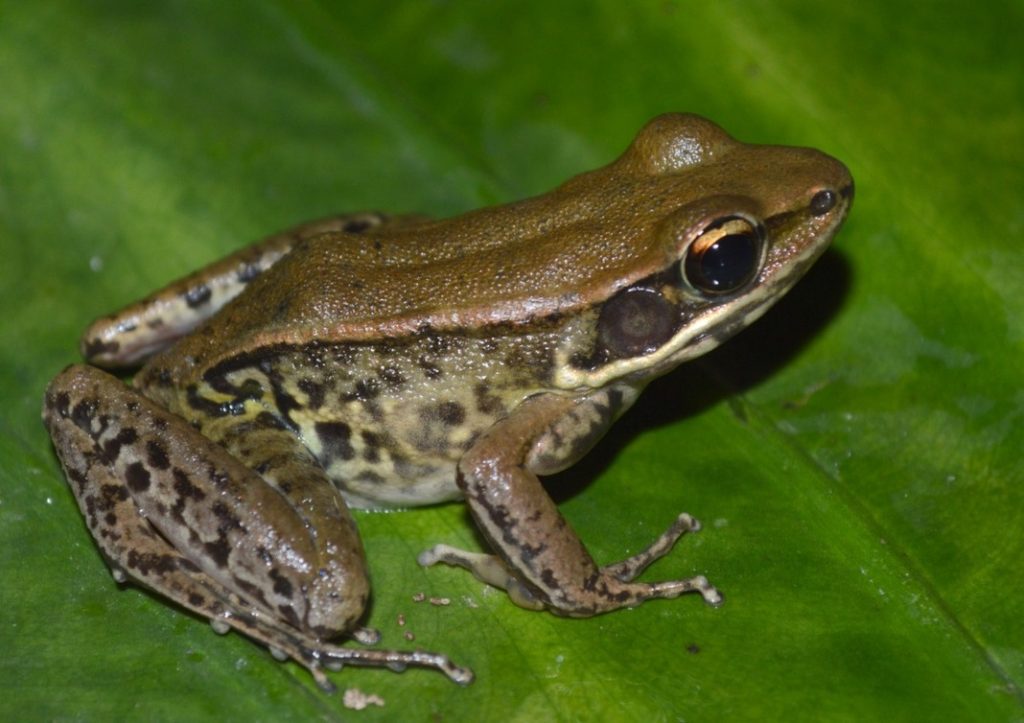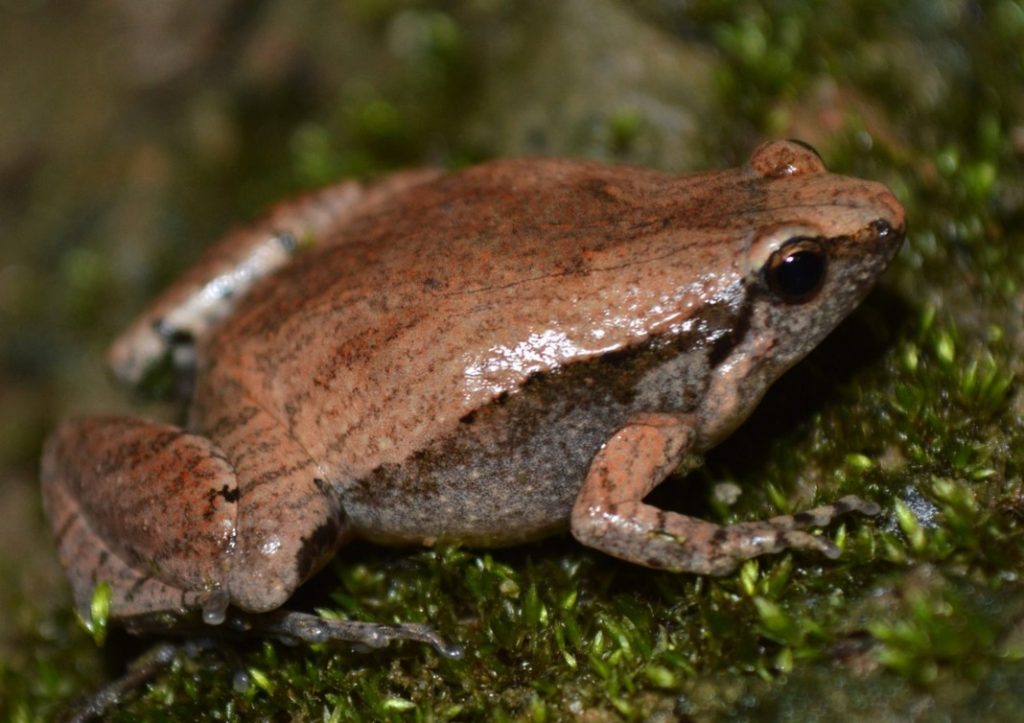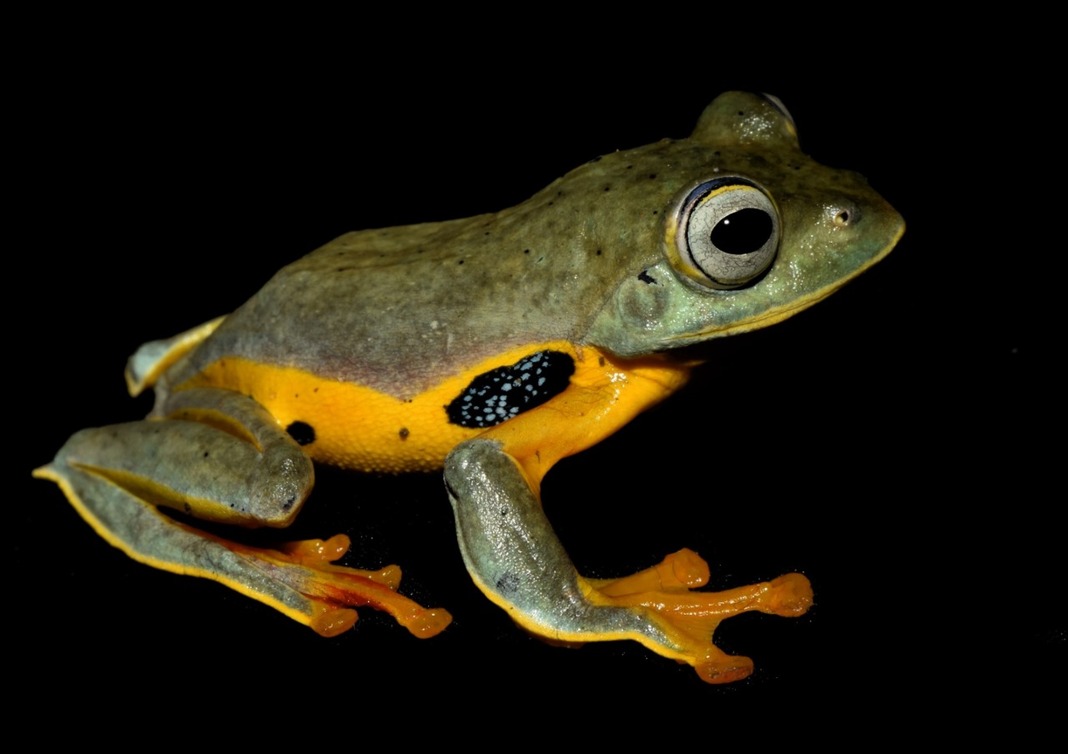ROOPAK GOSWAMI
Shillong, Nov 3: In a groundbreaking effort to understand the secret lives of India’s frogs, researchers from Assam Don Bosco University and the conservation group Help Earth have achieved a breakthrough in amphibian studies by capturing the previously unknown calls of four rare frog species in Meghalaya.
The study has been accepted to be published in Natural History Sciences journal provides crucial insights into the lives of these elusive frogs and underscores the importance of acoustic diversity for conservation.

The four species—Hylarana leptoglossae (Long-tongued Forest Frog), Clinotarsus alticola (Northern Pointed-Snout Frog), Microhyla mymensinghensis (Mymensingh Chorus Frog), and Rhacophorus bipunctatus (Double-spotted Oranged Webbed Tree Frog) —had never had their calls reported before. By recording each frog’s unique “advertisement call,” used to attract mates, the researchers have created a vital foundation for understanding their behaviors, population dynamics, and ecological adaptations. Acoustic profiling was done in all for nine frog species.
The names of the researchers who did the acoustic profiling of the frogs are Holiness Warjri( Assam Don Dosco University) , Madhurima Das ( Assam Don Bosco University) and Jayaditya Purkayastha from Help Earth.

Frogs use sound like a language and each call has its own rhythm and frequency, and understanding these acoustic patterns is essential for identifying species and monitoring their survival. Conducted between July 2022 and October 2023, the study involved extensive fieldwork in Meghalaya’s dense forests, grasslands, and other diverse habitats.
Acoustic profiling of these frogs revealed fascinating details about their behavior. For instance, Jerdon’s Tree Frog produces a rapid, repetitive call, while the Northern Pointed-Snout Frog uses a deeper, slower sound. These species-specific calls help scientists understand mating strategies and ecological adaptations, providing a previously missing piece in the puzzle of their lives. The researchers also emphasize that documenting these calls aids taxonomy, as unique vocalizations serve as “fingerprints” for identifying species in the wild.
These findings come at a critical time, as frogs face increasing threats from habitat destruction, human encroachment, and noise pollution. Frogs are highly sensitive to environmental changes, and noise pollution can interfere with their natural calls, impacting their ability to mate and communicate effectively. When noise disrupts their calls, it threatens their survival and the data offers a baseline for monitoring these impacts over time.

By using bioacoustics—a method that analyzes animal sounds without physical interference—the researchers have highlighted an ethical, effective way to monitor biodiversity. Non-invasive and highly accurate, bioacoustic monitoring allows scientists to study species in their natural habitats without disrupting their behavior. It’s a powerful tool for biodiversity conservation, especially for species as sensitive as frogs.
The study’s authors hope their work will draw attention to the need for stronger conservation measures in the region, emphasizing that protecting these rare frog populations is critical to preserving Meghalaya’s ecological balance.




